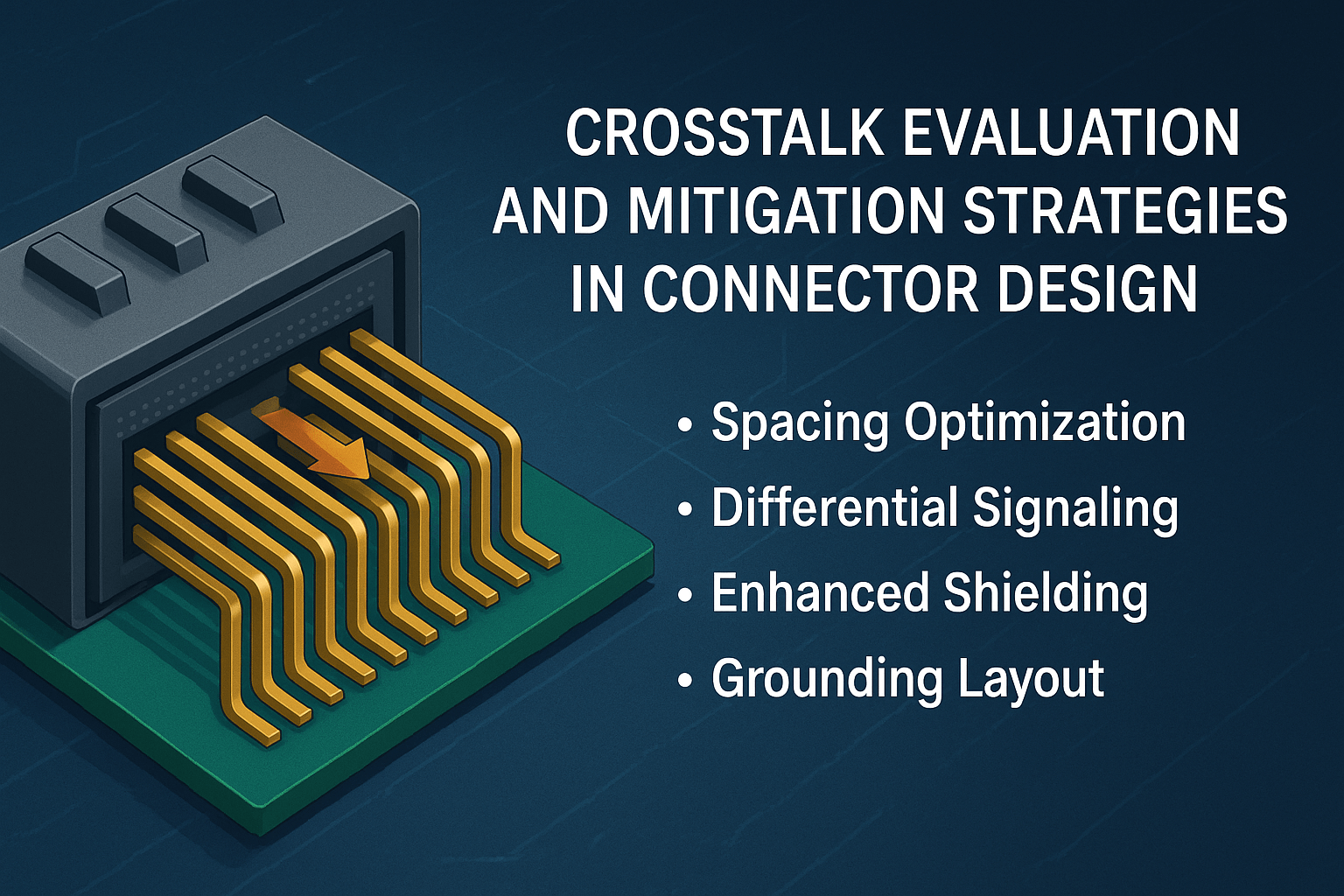Crosstalk Evaluation and Mitigation Strategies in Connector Design
In modern electronic system design, connectors play a critical role in ensuring reliable and accurate signal transmission. Crosstalk, one of the major sources of interference, can lead to signal distortion and increased bit error rates if not properly assessed and mitigated—ultimately compromising overall system performance. The following are professional strategies and methods for evaluating and reducing crosstalk in connector design:

1. Spacing Optimization
According to electromagnetic theory, increasing the distance between signal lines reduces electromagnetic coupling and crosstalk. This is a simple yet effective method.
2. Use of Differential Signaling
Differential pairs provide strong immunity to external noise and can cancel out crosstalk, enhancing transmission stability.
3. Enhanced Shielding Design
High-performance shielding materials can block external EMI and prevent internal signal leakage, significantly reducing the likelihood of crosstalk.
4. Optimized Ground Layout
A well-planned ground return path with low impedance minimizes coupling and ensures signal integrity.
5. Precise Impedance Matching
Proper impedance control reduces signal reflections, which are a common source of crosstalk.
6. Signal Line Arrangement
Group signal lines based on their characteristics. Keep sensitive or low-speed signals away from high-speed lines to reduce interference.
7. Selection of Isolation Materials
Use dielectric materials with high permittivity and low loss in critical areas to strengthen electric field isolation and reduce capacitive coupling.
8. Crosstalk Testing and Evaluation
Use specialized instruments to measure key parameters and assess crosstalk levels, providing data to guide design improvements.
9. Simulation-Assisted Design
Utilize electromagnetic simulation tools to model signal behavior and field distribution, identifying high-risk areas and validating designs in advance.
10. Additional Mitigation Techniques
- Twisted Pair Technique: Twisting wire pairs increases spacing and disrupts coupling paths, improving signal stability.
- Connector Structure Optimization: Design internal layout, pin assignment, and signal routing carefully to reduce EMI and crosstalk.
- EMI Absorbing Materials: Apply innovative absorbing materials in critical areas to dissipate electromagnetic energy and suppress coupling.
- Precise Signal Length Control: Keep signal lines equal in length to avoid delay mismatches and minimize reflection-induced crosstalk.
- Rate & Frequency Matching: Select electrical and physical properties based on signal speed and frequency to reduce crosstalk sensitivity and enhance high-speed performance.
Conclusion:
By systematically applying these professional evaluation and mitigation strategies, engineers can significantly reduce the impact of crosstalk on signal transmission during connector design. This results in improved signal integrity and EMC performance, laying a solid foundation for the stable and high-performance operation of electronic systems.



